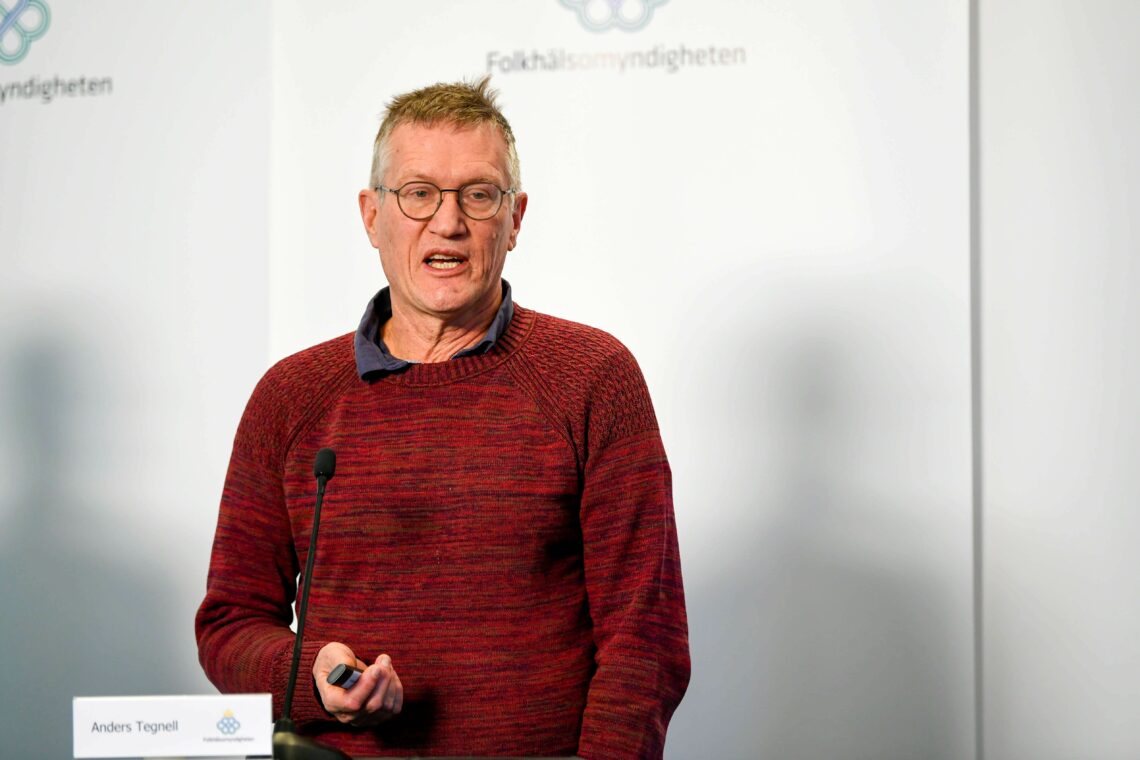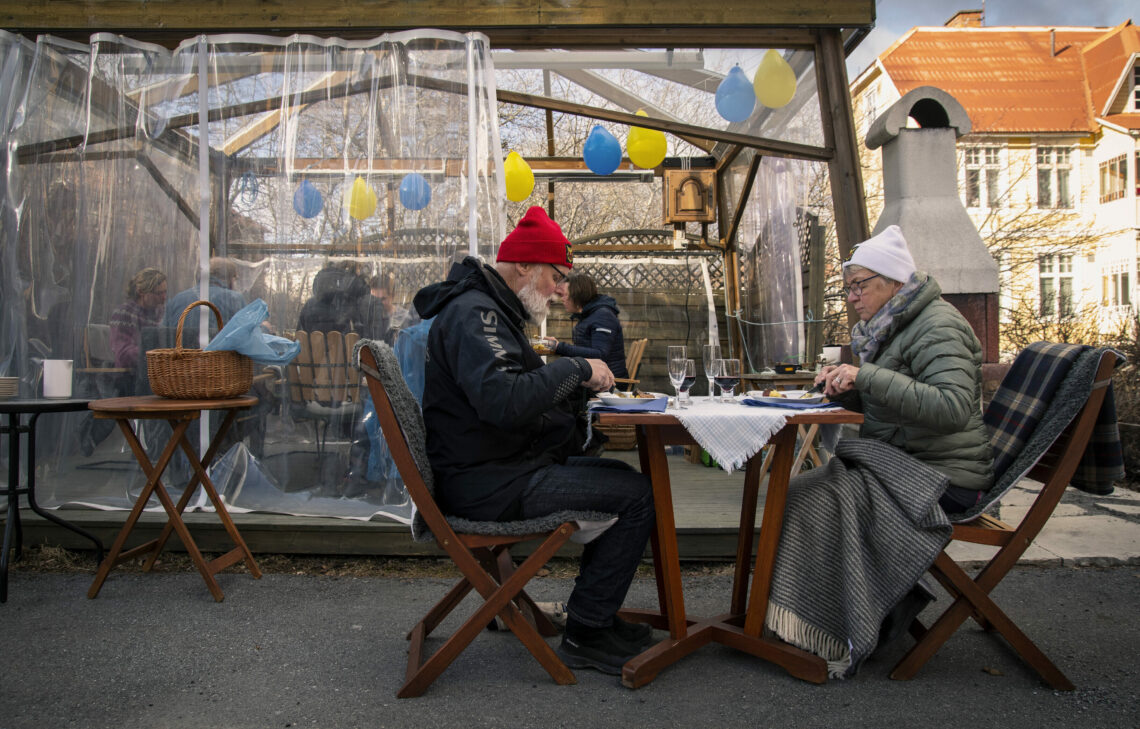Sweden’s Covid-19 response deepens Nordic disharmony
Many expected the Nordic region to weather the pandemic with relatively little damage. However, Sweden’s lax response to the Covid-19 health crisis exposed a deep divergence in values between the authorities in Stockholm and neighboring countries.

In a nutshell
- Sweden's response to Covid-19 was not aligned with the rest of the region’s
- Neighboring countries have closed their borders with Sweden
- Regional coordination could be affected in the long term
When the Covid-19 pandemic struck Europe, the Nordic countries (Denmark, Finland, Iceland, Norway and Sweden) had good reason to believe they would be able to weather the crisis with minimal damage. Low population densities and a high share of single-member households would facilitate social distancing. High-quality health care services would ensure excellent treatment for the infected, and a high level of trust in government and public agencies meant restrictions would be followed. Most importantly, a coordinated response to the spread of the virus would help minimize the damage to economic activity. If all the Nordic countries succeeded in keeping the rate of new Covid-infections at the same low levels, with minimum strain on hospitals, it would be possible to maintain a common bubble of open borders.
Disjointed response
There was only one snag. The Nordic response was not coordinated. When the other four countries introduced tough restrictions that included periodic lockdowns, Sweden decided it would stand tall against the world. Convinced that the pandemic would turn out to be nothing but a bad case of flu, it opted for minimal “recommendations” that could be breached without penalties. The stage was set by an expert affiliated with the Swedish Public Health Agency, who declared that everybody in the world would get infected with Covid-19, and that most would not even notice. By June 2020, Stockholm would have reached herd immunity and normalcy would return. Making plans for summer holidays abroad was no problem. Acting on such extreme beliefs meant Sweden was at loggerheads with its neighbors.
When the other Nordic countries introduced tough restrictions that included periodic lockdowns, Sweden decided it would stand tall against the world.
By mid-May this year, the total number of infections in Sweden (measured per million of population) had surpassed 101,000 and the total number of deaths was above 1,400. This was considerably worse than in Denmark, where the third wave had caused the total rate of infections to rise above 45,000 and the total number of deaths to reach 430. And it was a world apart from the other three, with Norway at 21,000 infections and 142 deaths, Finland at 16,000 infections and 168 deaths, and Iceland at 19,000 infections and 85 deaths.
For the Swedish government, the high death rate would become a serious international embarrassment. But it would not be until the third wave in the spring of 2021 that Sweden would mend its Covid-19 response. Even then, the restrictions imposed were far milder than in many other countries. As a result, the pandemic raged on – and took a heavy toll.
Regional outlier
According to The Economist, by the end of April all but two of the 15 regions in the European Union that had the highest rates of new infections were in Sweden. By mid-May, the country had among the highest rates of new infections in the EU, second only to Cyprus. While vaccination of the most vulnerable had caused deaths to decline, the high rate of new infections still caused numerous fatalities.
In the initial stages of the pandemic, relations between the Nordic neighbors remained civil. It was when the rapid rise in new infections caused a spike in death rates that the Swedish side developed an increasingly defensive posture, claiming it was in the right and that all others would soon enough be forced to recognize this. In a June 2020 interview, State Epidemiologist Anders Tegnell said it was “as if the whole world had gone mad.”

As public health experts in the neighboring countries responded with sarcasm, the debate escalated into outright animosity. Social media in Nordic countries began overflowing with nationalist resentment, in some cases demanding that borders with Sweden close indefinitely.
It may be tempting to dismiss this as a tempest in a teacup due to emotions running high. But the situation is more complex. While the Swedish government has vehemently denied that it was aiming to reach herd immunity, its minimal interventions created a situation where the rate of new infections and deaths was far higher than in all the other Nordic countries combined. Neighboring countries closed their borders. Instead of a common Nordic bubble, Finland and the three Baltic States formed their own in the east, and Norway and Denmark did the same in the west.
Split communities
The immediate impact of imposing a quarantine on travelers from Sweden was to exacerbate the economic downturn. That other Nordic countries were willing to pay this price to avoid importing infection illustrates their widely diverging priorities compared to Sweden.
Long-term, Stockholm’s Covid-19 response may have created lasting damage to Swedish public health. It may turn out that a high number of cancers will have gone undetected while hospitals were handling large numbers of Covid-19 patients. And the health system will have to face the consequences of hospital staff having been pushed to the limit for well over a year.
In mid-May 2021, 1,546 Covid-19 patients were hospitalized in Sweden, better than the peak of 3,000 in early January but a far cry from 162 in Denmark. Doctors in intensive care wards called on the government to request help from neighboring countries, but to no avail. Swedish nurses have been under such prolonged stress that many are now leaving the profession.
Transit at risk
The absence of a common Nordic response to the pandemic has also caused serious disruption to the cross-border integration that long constituted the very essence of Nordic cooperation. In the south, the dynamic Oresund region, also known as Greater Copenhagen, accounts for 26 percent of joint Danish-Swedish gross domestic product. The two major cities – Copenhagen and Malmo – are linked via a 16-kilometer road and rail bridge across the Oresund Strait. Many Swedes work in Copenhagen and many Danes live on the Swedish side, where housing is more affordable.
Long-term, Stockholm’s Covid-19 response may have created lasting damage to Swedish public health.
On the border between Sweden and Finland, the twin cities Haparanda and Tornea have effectively merged into one. In the west, differences in taxation mean large numbers of Norwegians normally drive to Sweden to purchase cheaper alcohol, tobacco and sugar. In the east, vibrant ferry traffic links not only Stockholm and Helsinki, but also Tallinn, promoting the reintegration of Estonia into the Nordic community.
All of this is now under threat. The closure of the Oresund bridge to both tourism and transit travel from Sweden has driven a wedge between the two countries. Norwegians no longer flock to Swedish border areas for cheaper goods. Ferry traffic across the central part of the Baltic is nearly gone. Haparanda and Tornea have been separated by a Berlin-wall style fence, splitting up families. While the others blame Sweden for not having the virus under control, Stockholm emphasizes that its borders have remained open and cries foul about discriminatory practices.
Scenarios
As the virus recedes and borders reopen, the question is how much normalcy in relations will be restored. The long-term danger is that trading barbs over Covid strategies will exacerbate simmering feelings of resentment over migration. The regional differences in handling the two crises have been eerily similar.
Much like Sweden pursued its own Covid-19 policy, in 2015 it adopted an outlier stance on migration. As migrants flowed northward into Europe, Sweden kept its borders open. In contrast, Denmark opted for a wave-through policy, pointing all migrants toward Sweden while making sure its own restrictions were among the toughest in the European Union. Norway received no more than the minimum required, as did Finland.
The feeling across the Nordic region is that Sweden has willfully allowed its authorities to lose control not only over the coronavirus but also over migration and the spike in gangland violence that has resulted from failing integration. Given the spillover potential of both issues, the outlook for resuming good neighborly relations and reviving cooperation does not only depend on how the pandemic unfolds. It almost appears as if border closures officially motivated by a desire to stop the spread of the virus have been at least partially caused by a desire to punish the troublesome Swedes.







